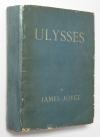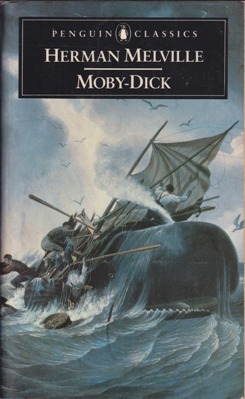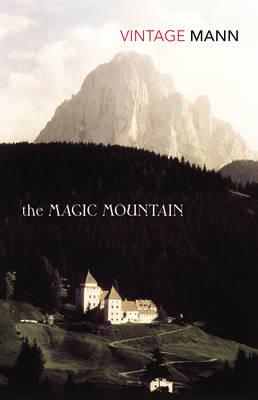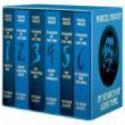Author Photo And Bio
 Age 5: Harold and the Purple Crayon by Crockett Johnson (1955). “One night Harold decided to go for a walk in the moonlight.” But there was no moon. So the little boy drew one with his purple crayon. Then he drew a path to walk on. Soon he was using his purple crayon to create real adventures in the forest, ocean, and the air, before drawing a bead for home and bed. Creative, resourceful, and full of surprising purpose, Harold and his trusty crayon reveal the imagination’s power to remake the world.
Age 5: Harold and the Purple Crayon by Crockett Johnson (1955). “One night Harold decided to go for a walk in the moonlight.” But there was no moon. So the little boy drew one with his purple crayon. Then he drew a path to walk on. Soon he was using his purple crayon to create real adventures in the forest, ocean, and the air, before drawing a bead for home and bed. Creative, resourceful, and full of surprising purpose, Harold and his trusty crayon reveal the imagination’s power to remake the world.
 Age 10: The Bible (see below) and The Odyssey by Homer (ninth century b.c.e.?). Where The Iliad tells of war, The Odyssey is the story of survival and reconciliation following the ten-year battle with Troy. Where Achilles was defined by warrior brutality, Odysseus, King of Ithaca, is defined by his intelligence and wit. This epic poem follows Odysseus on his adventures as he struggles —against the threats of sea monsters and the temptation of the sirens’ song —to be reunited with his son Telemachus, his faithful, clever queen Penelope, and their kingdom.
Age 10: The Bible (see below) and The Odyssey by Homer (ninth century b.c.e.?). Where The Iliad tells of war, The Odyssey is the story of survival and reconciliation following the ten-year battle with Troy. Where Achilles was defined by warrior brutality, Odysseus, King of Ithaca, is defined by his intelligence and wit. This epic poem follows Odysseus on his adventures as he struggles —against the threats of sea monsters and the temptation of the sirens’ song —to be reunited with his son Telemachus, his faithful, clever queen Penelope, and their kingdom.
 Age 15: The Lord of the Rings by J. R. R. Tolkien (1954–56). An Oxford medievalist, Tolkien drew on his vast knowledge of mythology, theology, and linguistics to imagine this epic trilogy. The books chronicle the hobbit Frodo’s attempt to destroy the magical ring of Sauron, Lord of Darkness. “The Fellowship of the Ring” introduces the men, dwarves, and elves summoned by the wizard Gandalf to protect Frodo. In “The Two Towers,” Frodo and his companion Sam continue their quest toward Mount Doom, while the rest of the fellowship are brought into the battle detailed in “The Return of the King.”
Age 15: The Lord of the Rings by J. R. R. Tolkien (1954–56). An Oxford medievalist, Tolkien drew on his vast knowledge of mythology, theology, and linguistics to imagine this epic trilogy. The books chronicle the hobbit Frodo’s attempt to destroy the magical ring of Sauron, Lord of Darkness. “The Fellowship of the Ring” introduces the men, dwarves, and elves summoned by the wizard Gandalf to protect Frodo. In “The Two Towers,” Frodo and his companion Sam continue their quest toward Mount Doom, while the rest of the fellowship are brought into the battle detailed in “The Return of the King.”
 Age 20: Ulysses by James Joyce (1922). Filled with convoluted plotting, scrambled syntax, puns, neologisms, and arcane mythological allusions, Ulysses recounts the misadventures of schlubby Dublin advertising salesman Leopold Bloom on a single day, June 16, 1904. As Everyman Bloom and a host of other characters act out, on a banal and quotidian scale, the major episodes of Homer’s Odyssey —including encounters with modern-day sirens and a Cyclops —Joyce’s bawdy mock-epic suggests the improbability, perhaps even the pointlessness, of heroism in the modern age.
Age 20: Ulysses by James Joyce (1922). Filled with convoluted plotting, scrambled syntax, puns, neologisms, and arcane mythological allusions, Ulysses recounts the misadventures of schlubby Dublin advertising salesman Leopold Bloom on a single day, June 16, 1904. As Everyman Bloom and a host of other characters act out, on a banal and quotidian scale, the major episodes of Homer’s Odyssey —including encounters with modern-day sirens and a Cyclops —Joyce’s bawdy mock-epic suggests the improbability, perhaps even the pointlessness, of heroism in the modern age.
 Age 25: Moby-Dick by Herman Melville (1851). This sweeping saga of obsession, vanity, and vengeance at sea can be read as a harrowing parable, a gripping adventure story, or a semiscientific chronicle of the whaling industry. No matter, the book rewards patient readers with some of fiction’s most memorable characters, from mad Captain Ahab to the titular white whale that crippled him, from the honorable pagan Queequeg to our insightful narrator/surrogate (“Call me”) Ishmael, to that hell-bent vessel itself, the Pequod.
Age 25: Moby-Dick by Herman Melville (1851). This sweeping saga of obsession, vanity, and vengeance at sea can be read as a harrowing parable, a gripping adventure story, or a semiscientific chronicle of the whaling industry. No matter, the book rewards patient readers with some of fiction’s most memorable characters, from mad Captain Ahab to the titular white whale that crippled him, from the honorable pagan Queequeg to our insightful narrator/surrogate (“Call me”) Ishmael, to that hell-bent vessel itself, the Pequod.
 Age 30: The Magic Mountain by Thomas Mann (1924). Hans Castorp visits his cousin at a sanatorium in the mountains of Switzerland. Soon he too becomes ill (maybe) and checks into the hospital —for seven years. In this sanctuary, Hans and the sanatorium’s denizens endlessly debate questions of morality, politics, and culture, as the “real world” moves inexorably toward the horror of World War I. A meditation on time, an inquiry into how life ought to be lived, and an unflinching look at evil, Mann considered the ideas in his monumental novel so challenging that he said it must be read at least twice.
Age 30: The Magic Mountain by Thomas Mann (1924). Hans Castorp visits his cousin at a sanatorium in the mountains of Switzerland. Soon he too becomes ill (maybe) and checks into the hospital —for seven years. In this sanctuary, Hans and the sanatorium’s denizens endlessly debate questions of morality, politics, and culture, as the “real world” moves inexorably toward the horror of World War I. A meditation on time, an inquiry into how life ought to be lived, and an unflinching look at evil, Mann considered the ideas in his monumental novel so challenging that he said it must be read at least twice.
 Age 35: In Search of Lost Time by Marcel Proust (1913–27). It’s about time. No, really. This seven-volume, three-thousand-page work is only superficially a mordant critique of French (mostly high) society in the belle époque. Both as author and as “Marcel,” the first-person narrator whose childhood memories are evoked by a crumbling madeleine cookie, Proust asks some of the same questions Einstein did about our notions of time and memory. As we follow the affairs, the badinage, and the betrayals of dozens of characters over the years, time is the highway and memory the driver.
Age 35: In Search of Lost Time by Marcel Proust (1913–27). It’s about time. No, really. This seven-volume, three-thousand-page work is only superficially a mordant critique of French (mostly high) society in the belle époque. Both as author and as “Marcel,” the first-person narrator whose childhood memories are evoked by a crumbling madeleine cookie, Proust asks some of the same questions Einstein did about our notions of time and memory. As we follow the affairs, the badinage, and the betrayals of dozens of characters over the years, time is the highway and memory the driver.
 Age 40: Great Expectations by Charles Dickens (1860–61). Dickens gives a twist to an ancient storyline —of the child of royal birth raised in humble surroundings. Looking back on his life, Pip describes his poor youth near marshes in rural England —his chance encounter with a murderous convict, his experiences with the strange Miss Havisham, who always wears a wedding dress, and his love for her beautiful adopted daughter Estella. As he approaches adulthood, Pip learns that he has a secret benefactor who arranges opportunities for him in London, wherein lies the tale, and the twist.
Age 40: Great Expectations by Charles Dickens (1860–61). Dickens gives a twist to an ancient storyline —of the child of royal birth raised in humble surroundings. Looking back on his life, Pip describes his poor youth near marshes in rural England —his chance encounter with a murderous convict, his experiences with the strange Miss Havisham, who always wears a wedding dress, and his love for her beautiful adopted daughter Estella. As he approaches adulthood, Pip learns that he has a secret benefactor who arranges opportunities for him in London, wherein lies the tale, and the twist.
 Age 45: My Ántonia by Willa Cather (1918). Featuring a beleaguered central heroine who endures her father’s suicide, is driven to work in the fields, and is seduced, abandoned, and left pregnant, this ought to be a tale of tragic inevitability. Instead, this beautifully elegiac novel offers an unsentimental paean to the prairie, to domesticity, and to memory itself. As remembered by her friend Jim, Ántonia is as mythic and down-to-earth as the Nebraska she inhabits.
Age 45: My Ántonia by Willa Cather (1918). Featuring a beleaguered central heroine who endures her father’s suicide, is driven to work in the fields, and is seduced, abandoned, and left pregnant, this ought to be a tale of tragic inevitability. Instead, this beautifully elegiac novel offers an unsentimental paean to the prairie, to domesticity, and to memory itself. As remembered by her friend Jim, Ántonia is as mythic and down-to-earth as the Nebraska she inhabits.
Age 50: Something wholly unforeseen that will change all these picks, again.
Appreciation of the Bible by Andrew Hudgins
The Bible is both a holy book and a work of supreme fiction; those of us who read it both ways are doubly blessed. One does not need to believe in God to hear the majesty of the story that begins, “In the beginning, God created the heaven and the earth. And the earth was without form, and void; and darkness was upon the face of the deep. And the Spirit of God moved upon the face of the waters. And God said, Let there be light: and there was light.” A great story itself, the Bible is also the source of great stories, by geniuses from Dante to Dostoevsky, Faulkner to Thomas Mann, and the poetry of the Psalms echoes through great poetry from William Blake to Walt Whitman to T. S. Eliot.
One does not have to believe Jesus is the Son of God to understand that his parables are penetrating works of fiction that embody complex truths about human nature. One need not believe Adam and Eve existed to see Genesis is, whatever else it is, a philosophically sophisticated and psychologically acute story about people’s innate response to authority, even loving authority. And it is perfectly possible to believe Moses and King David are fictional, and yet find true to life the Bible’s stories of these flawed men who succeed greatly, if only partially, while failing God time and again.
And what of Jesus—a god entering history as a man and living as a mortal? True or not true, “the greatest story ever told,” in the majesty of its telling and the power of its message, has taught an entire culture how to think about love, suffering, and transcendence, and it has fundamentally colored the language by which we talk about everything.